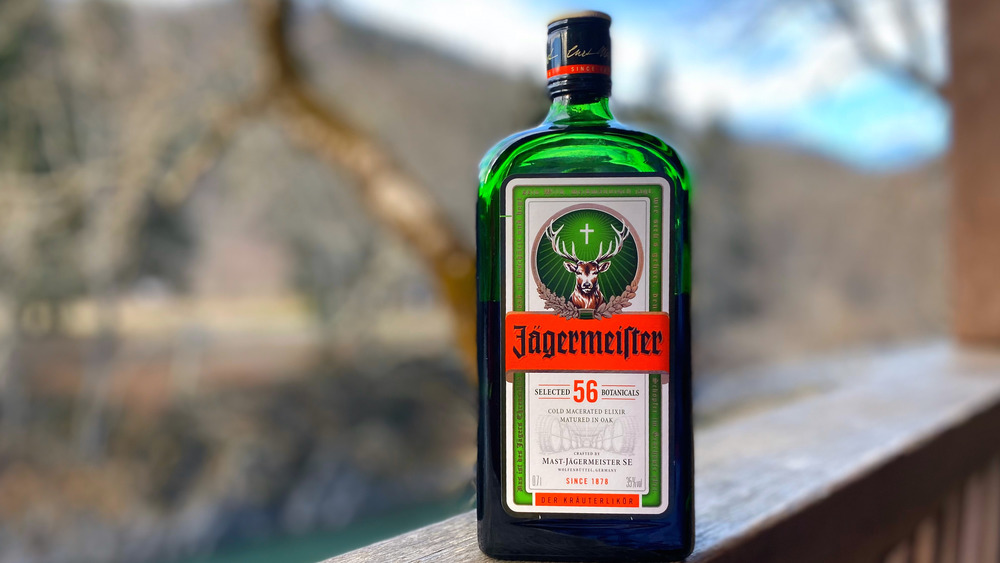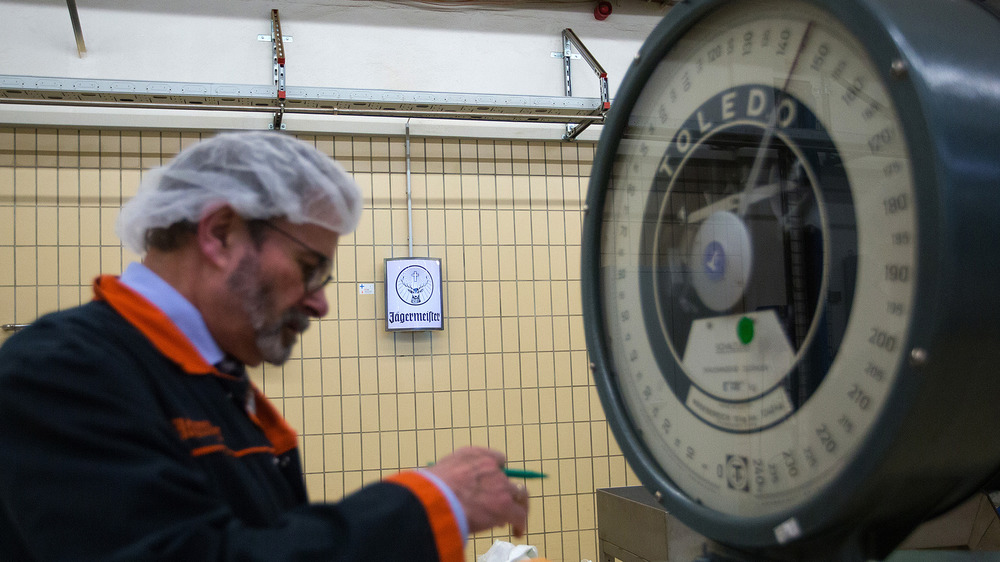The Surprising Amount Of Time It Really Takes To Make Jägermeister
The popular liquor Jägermeister was invented in the German town of Wolfenbüttel in 1935. Curt Mast, the son of a vinegar maker, was both an avid hunter, keen outdoorsman, and a creative drink enthusiast, according to Jägermeister. He came up with the recipe for the Kräuterlikör, or herbal liquor, after taking over his father's vinegar factory in his thirties. While it took 20 years for Mast to phase out vinegar production entirely, his drink recipe ultimately turned out to be a winner. Not only was the factory converted to manufacture Jägermeister full-time, demand for the drink was so great that they outgrew the original vinegar factory in 1958 (via Thrillist).
Eventually, Jägermeister distillers had to expand their production into three modern bottling plants, although their headquarters remained in Wolfenbüttel. Today, the drink is meticulously produced to ensure each batch remains faithful to its original recipe, which contains a unique blend of "56 herbs, blossoms, roots, and fruits" and takes over a year to produce, according to the brand's website.
The ingredients are aged for over a year before the liquor is ready to drink
Jägermeister explains that to make a perfect batch, master distillers first weigh all the dry ingredients of the herbal mixture, and then allow them to soak in the mixture of water and alcohol for up to three days. After the ingredients have been steeped, they are filtered, stored in 445 oak barrels, and left to mature for a full 365 days. After the ingredients have been sufficiently aged, they must undergo a second filtration process. This time, the drink is enriched with pure water, alcohol, and both caramelized and liquid sugar, and only then is it ready to be decanted. Every batch undergoes 383 quality checks before leaving the factory in its famously break-resistant green bottle.
The final product has 31 percent alcohol by volume. It is considered digestif in Germany and is often consumed after a meal or to help soothe minor health issues, like a sore throat or a cough. However, in America it is often thought of as a party drink, and it makes frequent appearances at bars, clubs, and large gatherings.

